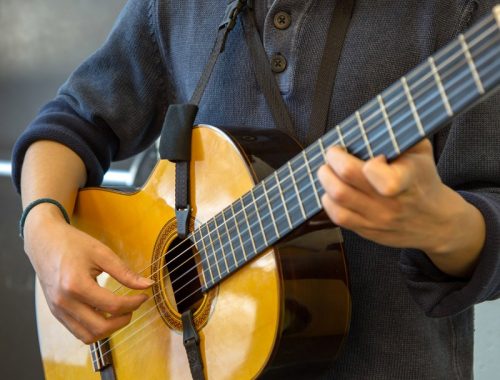
How to Protect Your Images Online – The Complete Guide
If you are a photographer and publish your work online, then chances are, that you have faced the unfortunate yet increasingly common situation of your images being stolen, copied and used without your permission. In this article, we present the complete guide on how to protect your images online.
Know Your Photography Copyrights
Before we start discussing the various ways by which you can protect your images online, you must understand your rights as a photographer. Here’s the big question that you must know the answer of:
What are my rights as a photographer over my photographs?
As a photographer, you own the full copyrights to the photographs you take, until you transfer some/all copyrights to someone else.
This means that you own these exclusive right to your photographs:
- to reproduce the photograph;
- to prepare derivative works based upon the photograph;
- to distribute copies of the photograph to the public by sale or other transfer of ownership, or by rental, lease, or lending;
- to display the photograph publicly;
How to protect your images online?
Now, coming to the point – how can you avoid becoming a piracy victim. Here are a few things that you can do:
Watermark Your Images
Add a visible watermark to all your images before you upload them. Well, the whole idea behind watermarking your images is establishing the copyright and protecting the images. If placed cleverly (in a hard to remove location), a watermark can save your image from unauthorized use. You can put anything like your name, your websites/blog’s name or logo as the watermark.

You can watermark your images while you are editing them or once the editing is done. There are a lot of watermarking software available on the market. For the photographers, who are always on the go – you can download watermarking apps like iWatermark or eZyWatermark lite.
The downside of using visible watermarks is that if they are placed prominently on your image to do their job well, they also ruin your image. On the other hand, a small, unobtrusive watermark will not deter anyone from copying your image as it can be easily cropped or edited out of your image.
Apply an Invisible Watermark
Digimarc is a paid service that provides an Adobe Photoshop plugin that lets you add an imperceptible identifier to your images. Digimarc claims that its invisible watermark survives and continues to communicate ownership rights even after file format changes, editing or cropping of your images. Digimarc also comes with a search service that searches millions of websites across the internet to find images that bear your unique watermarks and puts together a list of sites where your images are indeed found.
Safeguard images on your website
Disabling the right-click on the images on your website/blog can also prevent illegal downloads. While, this won’t discourage image theft in totality, but it will reduce it to some level. Determined visitors can still find the source of the image by sifting through your website code or just take a screenshot of the image (this is where watermarks are helpful). Also, make sure that only low-resolution images are available on your website/blog for viewing and high-quality versions are only available for purchase and cannot be accessed directly by anyone.

Encourage people to purchase images by pricing them well
When pricing your images, try keeping yourself in the buyer’s shoes and ask yourself the question – “Will I be willing to buy the image at this price?” and when you find the right answer, then put the price tag. For more help, go through this pricing guide for photography. You can also use licensing tools like LicenseStream to license, transact and monitor your images.
Are my images protected after following all of the above techniques?
Not really! While the above-mentioned processes can reduce image theft, the only way to make sure your photos are never stolen is not to publish them online! Image theft is a reality all photographers face; the key is to protect yourself as much as you can while being prepared for when it does happen.
The big question then is:
What can I do when my images are stolen?
These are the steps you need to follow
- Find the images that are being used without your permission using reverse image search.
- Many times, just a simple request to stop using the image illegally can be enough to dissuade the person who has stolen it.
- Send a legal cease-and-desist notice.
- Finally, based on the value you attach to an image, you can pursue the matter legally by filing a copyright infringement lawsuit

Reverse Image Search
You may think – its impossible to find all instances of my images being stolen and improperly reused. Quite to the contrary, there is a technology that makes the process as easy as a simple search.
What is Reverse Image Search?
Reverse Image Search is a technique that can help track your images wherever they are on the Internet by comparing your original image to all images indexed on the internet. Sifting through fake profiles, identifying unlabeled products, tracking down originals for reference, or even merely keeping a tab on your piece of art – the reverse image search has it all sorted for you.
Conclusion:
At the end of the day, these tools help to solve only a part of the problem. One should be well informed and be willing to take action to protect their intellectual property. In most cases though, photographers have to accept the reality that any image published online will eventually be copied, re-posted and reused.
You May Also Like

TOP popular songs for acoustic guitar
April 27, 2019
10 types of photography genres you can pursue as a professional photographer
June 28, 2019

